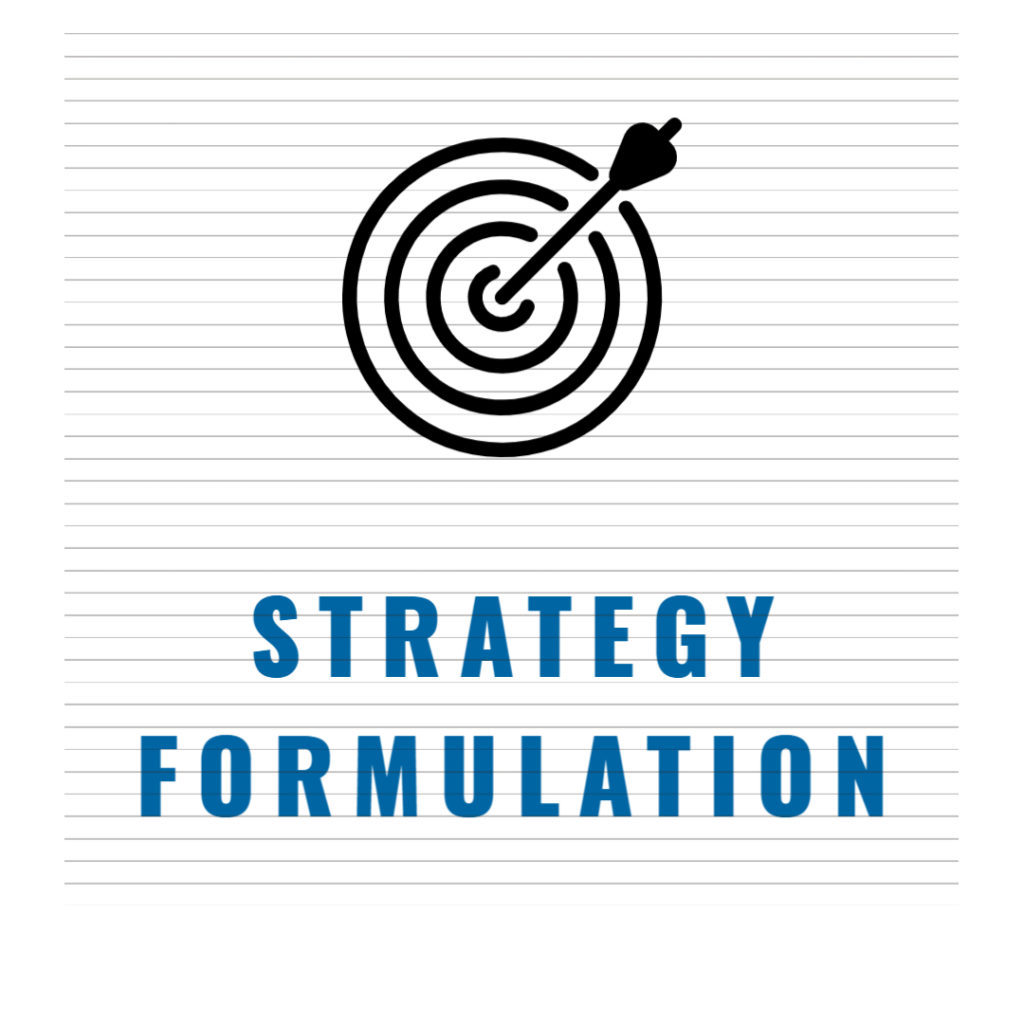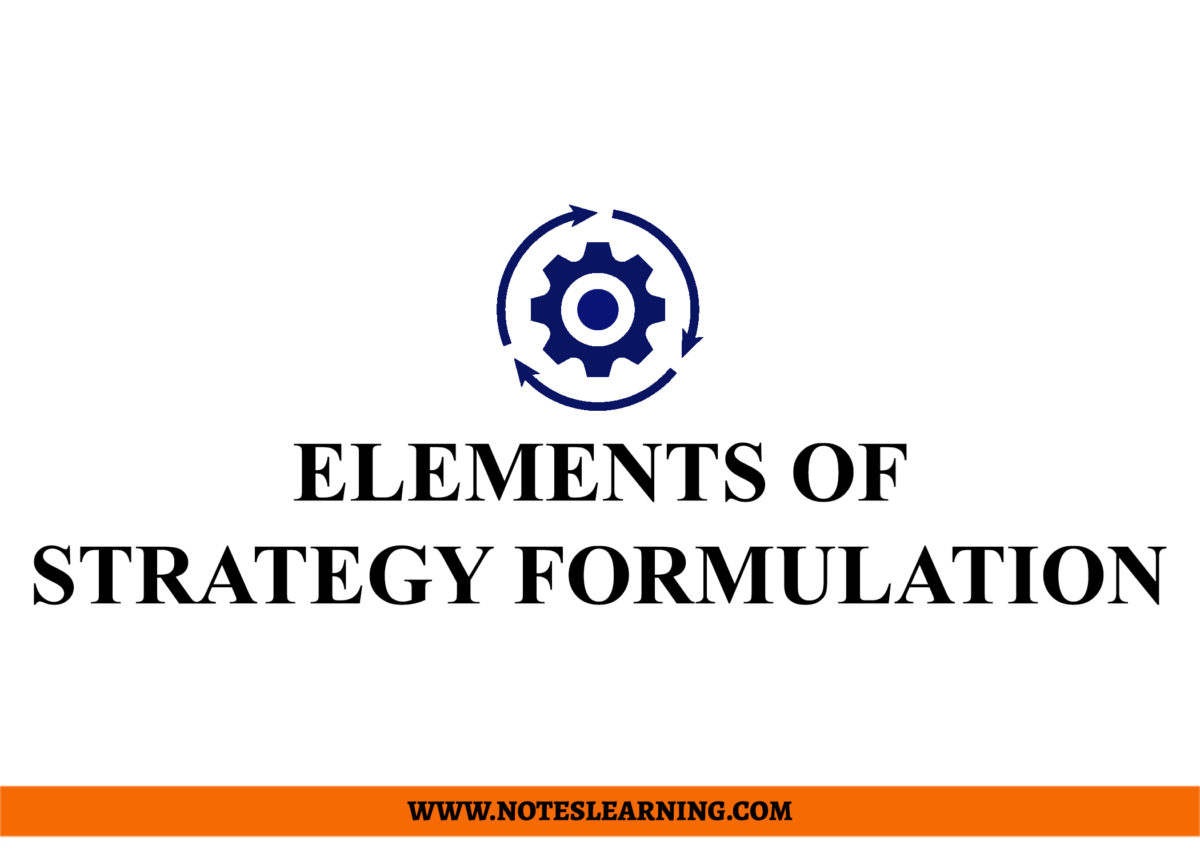Introduction
Strategic management is the management of ongoing activities that supports the organization to achieve its goals and objectives. The major activities included in strategy management are planning, monitoring, analysis and evaluation of all the organization’s necessities to meet its needs, required for achieving the goal. With the help of strategy management, organizations can have both financial and non-financial benefits. The ever changing business environment forces the organization to make changes in its strategy. Strategic management process helps the organization to analyze the present situation and formulate and implement the most effective strategies. Overall, it provides direction to the organization and its employees.
Elements of Strategy Formulation
There are four major elements of the strategy management. These elements are general steps for stepwise development of a new strategic plan for the organization. The four elements are situation analysis, strategy formulation, strategy implementation and strategy evaluation. In case the organization needs to make changes in the existing plan, they simply revisit and make necessary updates in these four elements.

Situation Analysis
Situation analysis is the first step of the strategic management process. In this step, one collects the information regarding the business environment for strategic purposes. During situation analysis, it is necessary to analyze all the internal and external factors affecting the organization. It is the stage of scanning and evaluation of all the factors related to the organization directly or indirectly..
This step focuses on the creation of the vision along with a mission statement to support it. This step includes making of business models. There are various techniques used for this analysis but the commonly used two methods are observation and communication method.
Different factors like government rules, economic situation, customer preferences, technological change, competition and other environmental factors are analyzed. For internal analysis, organizations can look at internal data like employee’s turnover, employee’s satisfaction, employee’s interaction with manager and shareholders. To collect the necessary data for internal analysis, organizations use surveys, interviews and questionnaires.
For external analysis, the organization analyzes the competitors and determines their position and dominance in the industry along with suppliers and creditors. The main components of this analysis are internal environment analysis, external environment analysis and competitor analysis. So, situation analysis helps the organization to determine its strength, weakness, opportunities and threat and also the organization’s situation in the market
Strategy Formulation
Strategy formulation is the process of selecting the best strategy which can help achieve the goals and objectives of the organization. The primary focus of this step is to design and develop strategies for organization. Alongwith the environment analysis, managers focus on corporate, business and functional strategies of the organization.
Functional strategies are the short term strategies related with the operational part of the organization. It focuses on different functional departments of the organization as human resource, finance, marketing and production. Each department has their specific strategies to achieve the goals set for them. For example, marketing strategies would be concerned with branding and advertisement of the product or services and increase its sales. Likewise, business strategies are related to the competition in the business or industry. Information of the competitors plays a vital role in this strategy.
Organization analyzes its competitors and determines their strengths and weaknesses. With the collected information of the competitors, the organization formulates its strategy to gain upper hand in the market and have competitive advantage. Finally, the long term strategies of the organization fall under corporate strategy. These strategies provide direction to the entire organization and functioning. Decisions regarding the establishment of different divisions of organization are the best example of corporate strategy.
Strategy Implementation
Strategy implementation means using the selected strategies from different available alternatives. This process focuses on determining and developing steps and procedures to implement the selected strategy. There can be a number of strategies for the organization, but organization prioritizes strategies based upon the impact and seriousness of the situation. During the implementation process, it is necessary to deal with the problems first which stands as the maximum threat to the organizations and then focus on other factors.
Effective communication plays a major role in this stage. Efficient communication needs to be there among the participants about the new strategies and action plan related to it to get support from the entire organization. Strategy implementation starts with setting of annual objectives for functional departments like finance, marketing and human resource. Managers revise the old strategies and introduce the new strategies for achievement of main objectives. For example, while implementing advertisement strategy, organizations need to determine the area for advertisement, time, medium and approach to advertising and target group . It consists of creating structure of organization, resources distribution and developing decision making process.
Strategy Evaluation
Strategy evaluation is the final process of strategy management. It is related to evaluating the progress of an implemented strategy in action. It analyzes the outcome from the implemented strategy. Organization needs to know organizational strategy and implementation process is as per the objective or not. During the evaluation process, the organization determines whether the steps are followed properly, deadline requirements and expected result are achieved. If any discrepancies are found in the new strategy and its process then the organization can work to modify it.
To gain a different perspective and view of the implemented strategy, organization management and employees both are involved in the evaluation process. Information regarding organizations performance and changing environment are the two major elements which helps the organization to take corrective action. So, strategy evaluation is the process of evaluation and control. The performance of the newly implemented strategy is evaluated. Depending on the performance of the result organization ascertains control over the strategy. If any changes are required strategies are reformulated to get better results.
Conclusion
There is no standard steps for strategy formulation. Strategy formulation process takes place in a planned way. Organizations with pre existing strategies will revise each step as per the requirement of the situation and make necessary changes in it. This is the age of global competition, organizations constantly adapt to the different changes in the industry and market. With the changes in internal and external factors organization needs to make changes in its strategies as well. Considering the situation, we change the existing strategies and implement the new strategies.This makes the strategy management process continuous and progressive. Improvements are made time to time as per changes in environment and requirement of the situation to achieve the organizational goals.
Reference
- Coulter, M. (2005). Strategic Management in Action. (3rd ed.). Upper Saddle River, NJ: Pearson Prentice Hall.
- BBA Mantra
- Strategic Management Sight


